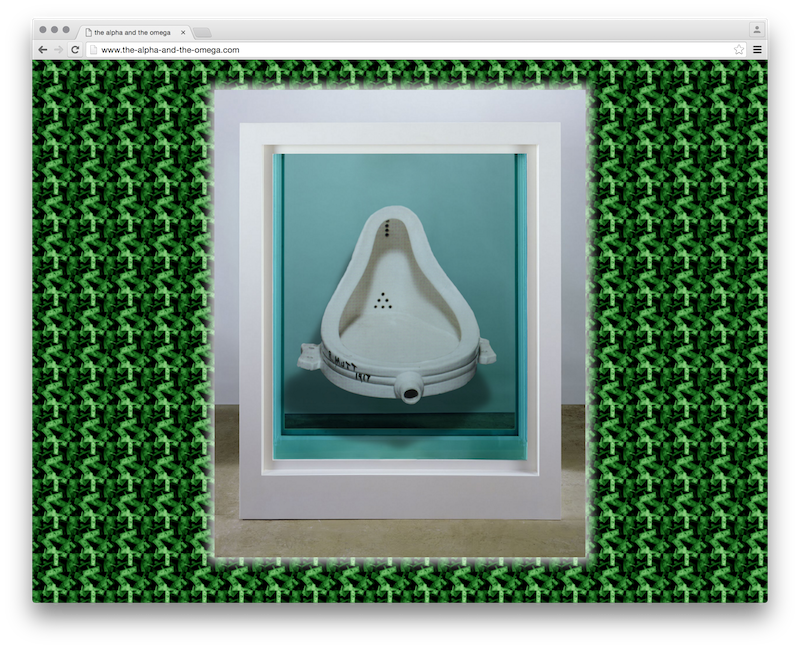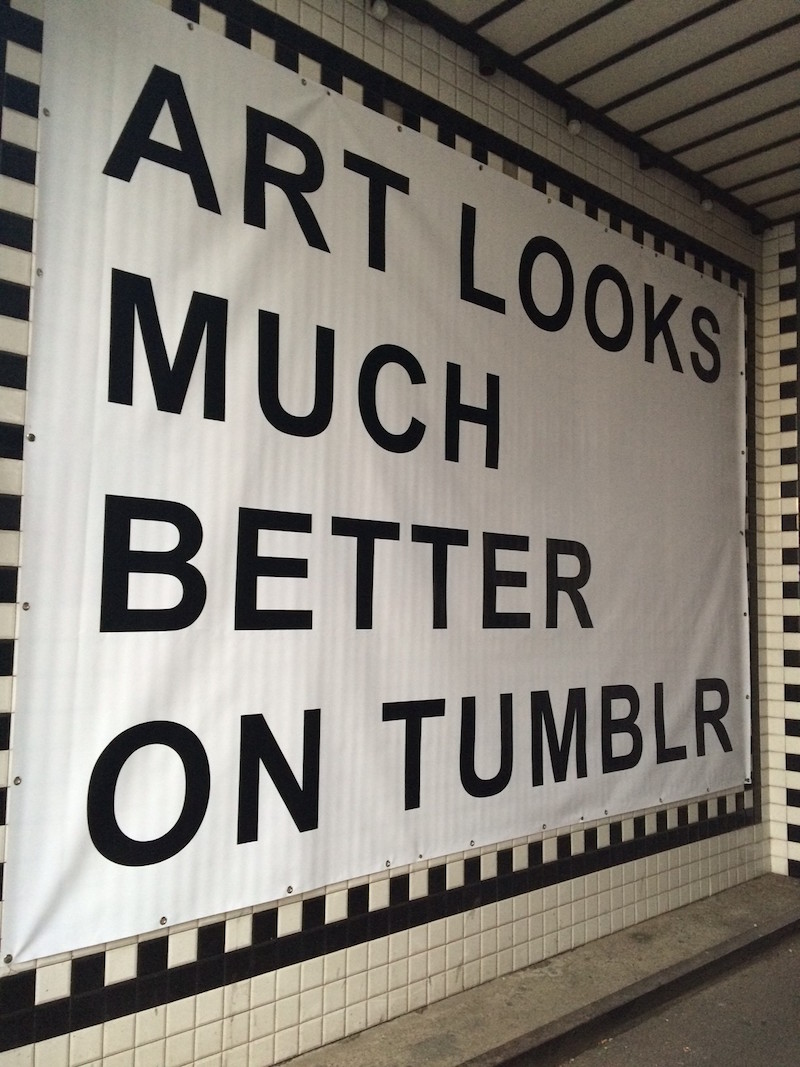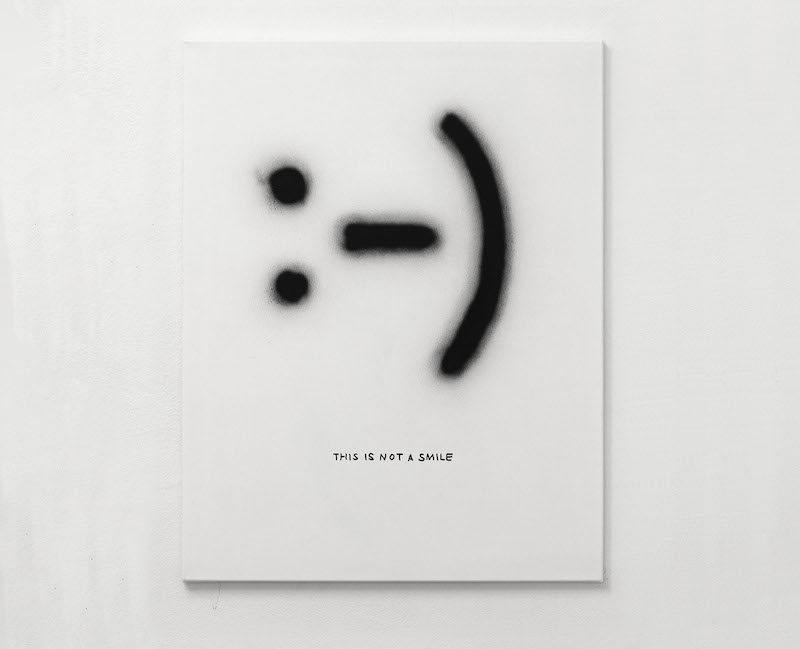 "This is not a smile" © Florian Kuhlmann
"This is not a smile" © Florian Kuhlmann
Florian Kuhlmann is not merely a digital artist. The challenges, the ambiguity, the changes and the opportunities posed by digital technology are central to all of his countless projects, uniting his interests under the key of digitalism. Working as an artist, curator, organiser of festivals and conferences, blogger or researcher, but also as a web designer or coder, 1975-born Florian currently runs the project space Digital3mpire and the art blog perisphere.de, both of which emphasise digital art in the area in and around Düsseldorf, where he lives. Having exhibited and curated internationally, his current project "this is not" returns to the material of the canvas and explores how the relation of text and emotion have altered in a time of digital every day conversations. His sharp reseach in these new social phenomena, that we are all a part of, are worth taking a closer look. In our interview he explains why digitalism is such an urgent matter to him and how art is a part of this discussion.
Anna-Lena Werner: Florian, where does your enthusiasm for digital technology stem from?
Florian Kuhlmann: I am not sure if it’s really enthusiasm, at least it’s not only enthusiasm. I am fascinated, but I also always wanted to understand digital systems and their technology, so that I would be able to defend myself against them. I would like to tell computer machines what to do, instead of being told by them. And, of course, it’s still a great material to work with. The concept of digitalism is transforming the world and the society. I’d like to be a part of this process.
ALW: So it’s a question of power? Man against machine?
FK: Absolutely. I believe this is one of the most important questions of our times. Especially when we look at new developments like “machine learning” or “deep learning”. Algorithms are increasingly organising our flow of information. That’s definitely a question of power.
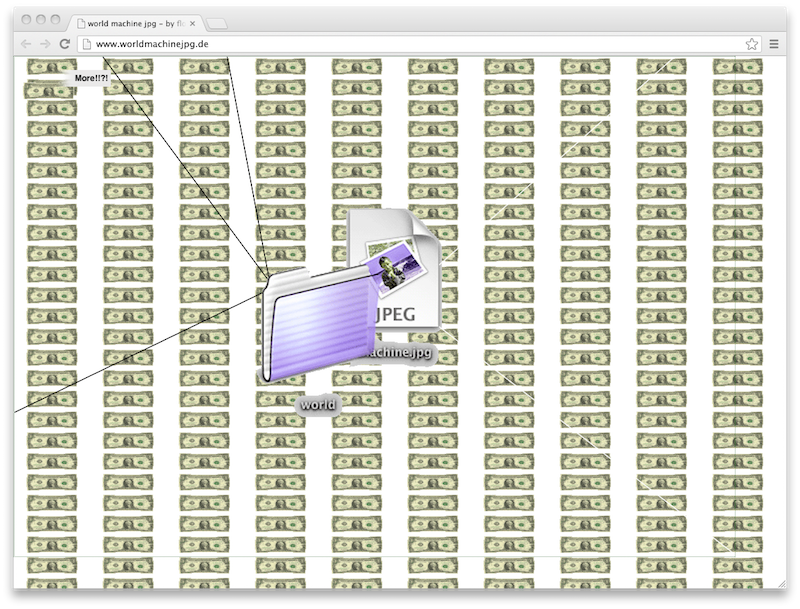
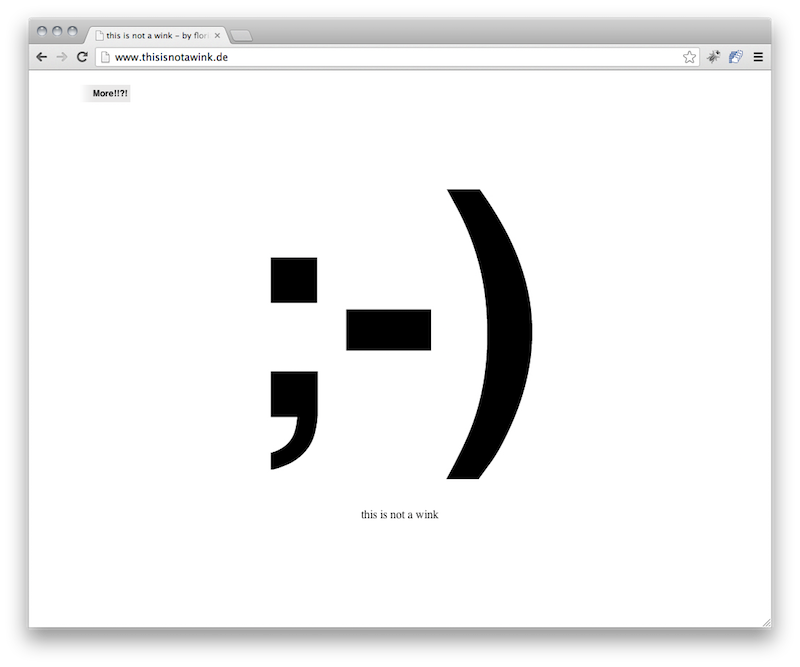
worldmachinejpg.de and thisisnotawink.de © Florian Kuhlmann
ALW: In many of your artistic projects it remains quite open whether you are sceptical, enthusiastic, ironic or worried about the Internet. For example your current series “this is not“ shows sprayed smileys, emoticons and other fragments of common Internet language on a canvas and similarly states in a sentence below each sign that “this is not a smiley“, or a “wink”, or a “loud laugh”. The series emphasises the difference between online and offline language systems and, like Magritte’s pipe painting, it challenges systems of representation and reality. Where do you position yourself in this conflict?
FK: I’d call my position critical affirmative and I am addicted.
ALW: So you think that online communication is addictive?
FK: Yes. Information is the new drug. My approach is: let’s do it, lets try it, lets live it, so I can understand it. At the same time, I am fast in recognising and discovering the rising problems that come with new technology, and I am quick to be critical about these new developments. Perhaps that’s the reason why my position often seems to remain open or undefined.
ALW: Making art, thus, is for you also a way of learning to understand and to handle the digital?
FK: Yes, very much. It's a way to develop concepts for handling the digital in a human way. My idea of art is inspired by the concept of enlightenment, even though I don't think that’s a clever strategy at the moment.
ALW: Why not?
FK: The power of 20th century art was very much carried by a growing self-confident and liberal bourgeoisie. At least since the french revolution, enlightenment and liberal thinking belonged together like a concept of political power of a new rising class of people. Liberal thinking was a strong force in our society and the bourgeoisie was willing to accept the need for anarchic forces in the arts. Nowadays, this class is shrinking in the Western world. The audience for such a concept is disappearing. What we can see now growing is an art world for the rich 1%. But they have other demands: art has to show and represent wealth and economic power. Wolfgang Ulrich’s book about “Siegerkunst” describes this quite well.
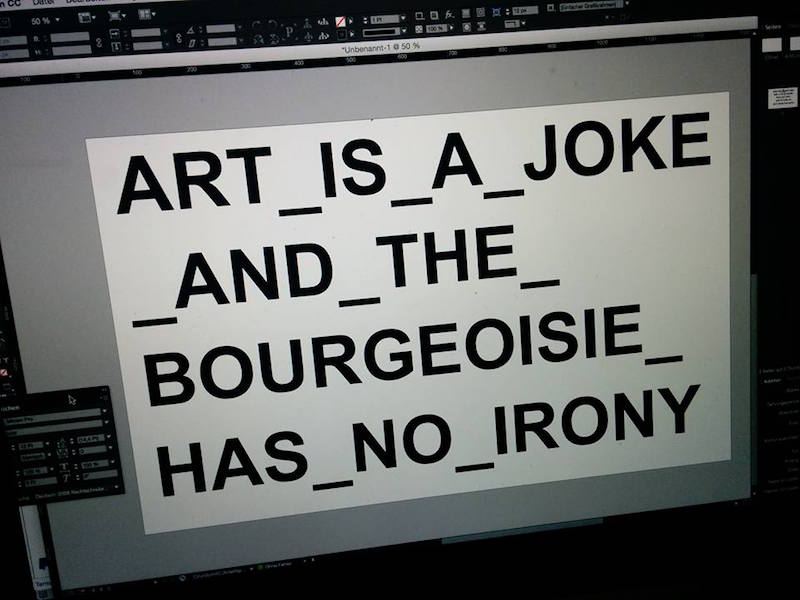
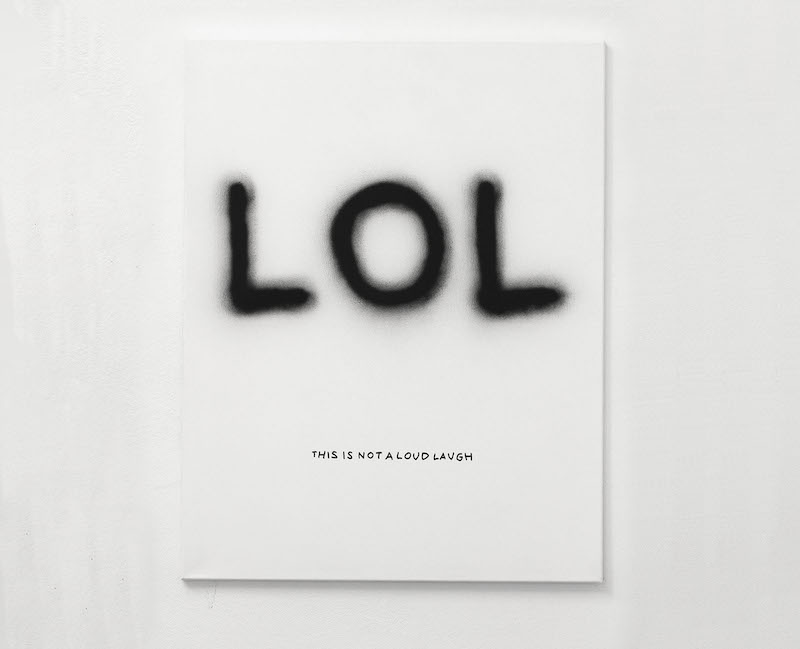 "Art is a Joke" and "This is not a loud laugh" © Florian Kuhlmann
"Art is a Joke" and "This is not a loud laugh" © Florian Kuhlmann
ALW: As in “this is not“, popular communication systems generally play an important part in your practice. Why has the medium of text become a playground to explore the ambiguous relation between the digital and the analogue for you?
FK: For several reasons. Text has become incredibly important in our everyday conversations. The daily communication I share with friends mostly takes place via text in chats on Whatsapp, email, Facebook or in comments. It’s definitely worth thinking about this phenomenon. Also, I had already done lots of work with images, especially in the context of digitalism and the Internet. Perhaps I needed a break from all these colourful and visually overwhelming pieces. And, finally, I think the war on images has been lost by art. That’s why we have to move to other fields, to keep the art alive.
ALW: Colourful images, mostly as digital collages, have been an extensive part of your work. You also upload them, recently with the hashtag #TheGift and the subheading “everything belongs to everybody”. Offering your collages for free download – is that a way of democratising art and to win this "war on images" that you mentioned?
FK: No. The war on images is lost for us. We lost the normative power. I am also not sure if it’s a way of democratising the arts; not even if it’s such a good idea to democratise art. It was more important to play with the idea of original and copy, and also with ownership. I very much like the idea of an art work that nobody can buy or own.
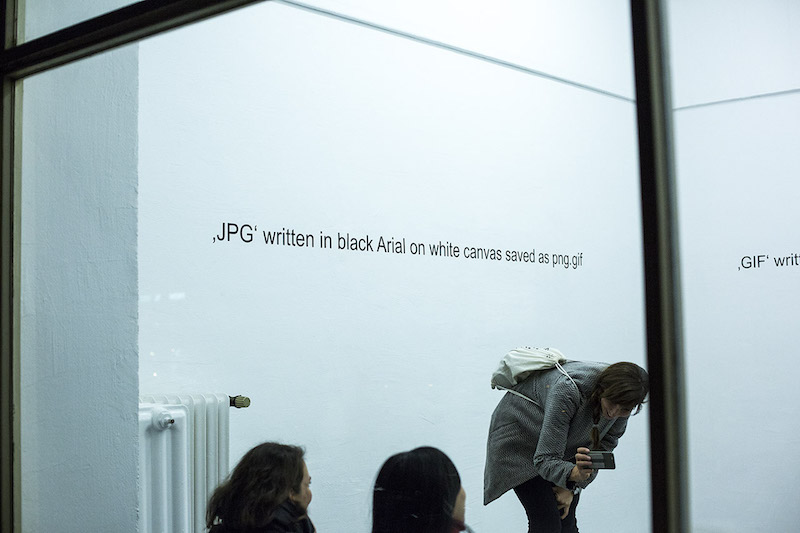
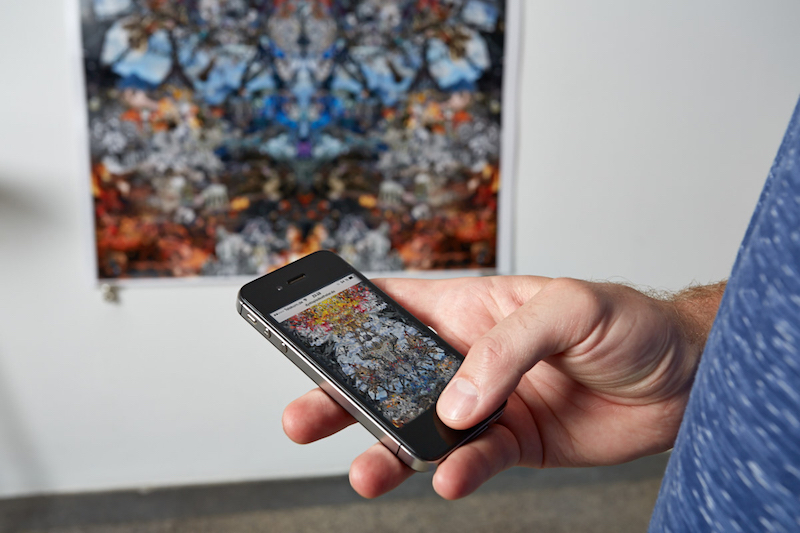
"CTRL-S" and "The Gift" © Florian Kuhlmann
ALW: What about materiality? “This is not“ re-introduces the canvas, a symbol of the traditional work of art. What role does materiality play in your work, especially in-between these two extremes of the canvas and the jpg?
FK: There’s still a gap. At the moment, I feel like I am working on both endings. On the one hand there is this long-lasting work with immaterial images, playing with copy and original, and on the other hand there is the re-introducing of the canvas, with a very reduced and conceptual aesthetic. It’s like two worlds standing next to each other. I think, if I would manage to bring them together, I will finally have succeeded in creating a strong art work. But to be honest, at the moment I can't really say how I will unite them and solve the problem.
ALW: You have also used text as the basis for statements that you embed like manifestos; such as I AM MY ANTISOCIAL NETWORK. Is there a sense of denial or a wish to step out of digital society incorporated in your work, too?
FK: Yes, for sure. Although I am addicted to it, I am also tired of this digital stuff. We are all tired and wish to step out of it, but we can't. This technology crawls deeper and deeper into our society, like a new force of nature. I would like to focus more on this mythological aspect in the future.
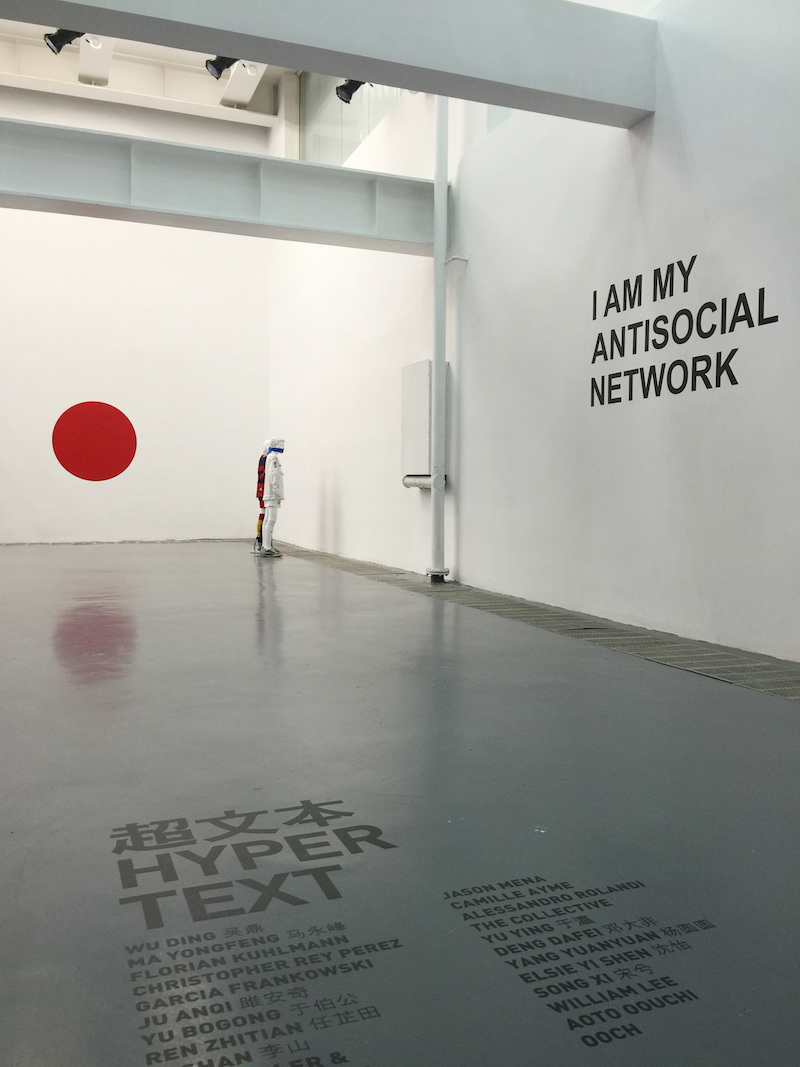
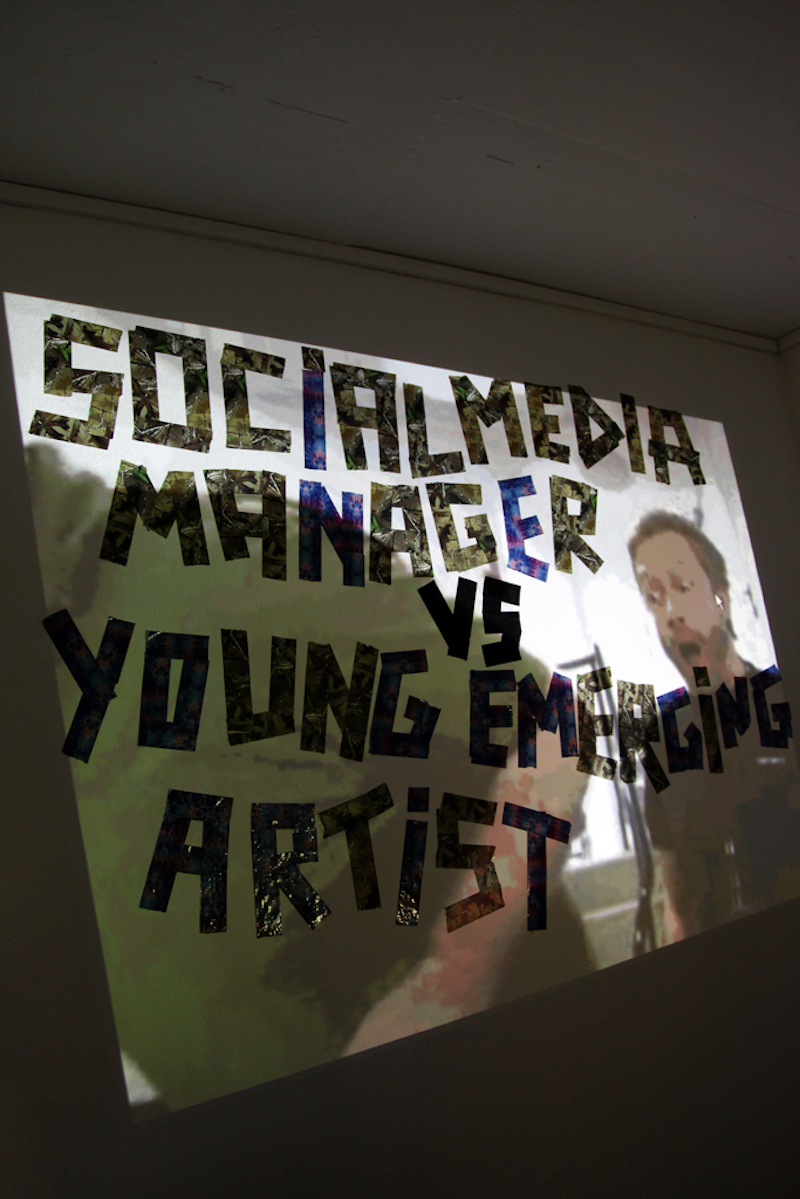 "I AM MY ANTISOCIAL NETWORK" and "Social Media Manager vs. Young emerging artist" © Florian Kuhlmann
"I AM MY ANTISOCIAL NETWORK" and "Social Media Manager vs. Young emerging artist" © Florian Kuhlmann

 "I AM MY ANTISOCIAL NETWORK" and "Social Media Manager vs. Young emerging artist" © Florian Kuhlmann
"I AM MY ANTISOCIAL NETWORK" and "Social Media Manager vs. Young emerging artist" © Florian Kuhlmann
ALW: That sounds like the fight between two personalities. Digital Schizophrenia – like it said in one of your installations: "Social Media Manager vs. Young emerging artist"?
FK: Perhaps, yes. It refers to the fight between the figure of the artist and the figure of the engineer. Both create, both design, but with a different approach. And while the figure of the artist was dominating the last centuries very much, the technology driven world is more focused on the
figure of the engineer.
ALW: You did an image and text based series that was called "#NON". What was that project about?
FK: :-) Nobody knows what NON is and that’s what i am so exciting about it. NON is an idea that we developed at the so called ‚NON verteiler’ a private mailing list, which I started years ago with some friends. It's dadaistic. We are fascinated by the NON, because we have no clue what it means. NON is some kind of freedom that you don't find in the field of art anymore. NON is an art for the beginning Metamoderne – and the Metamoderne always starts now.
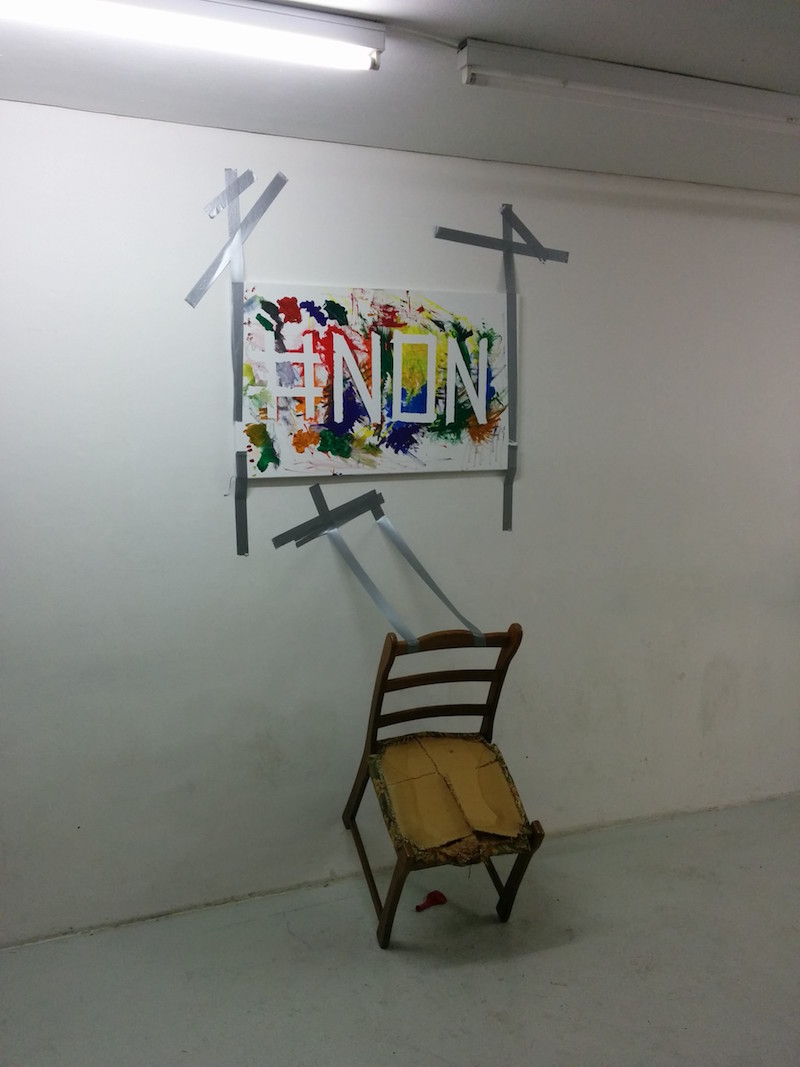
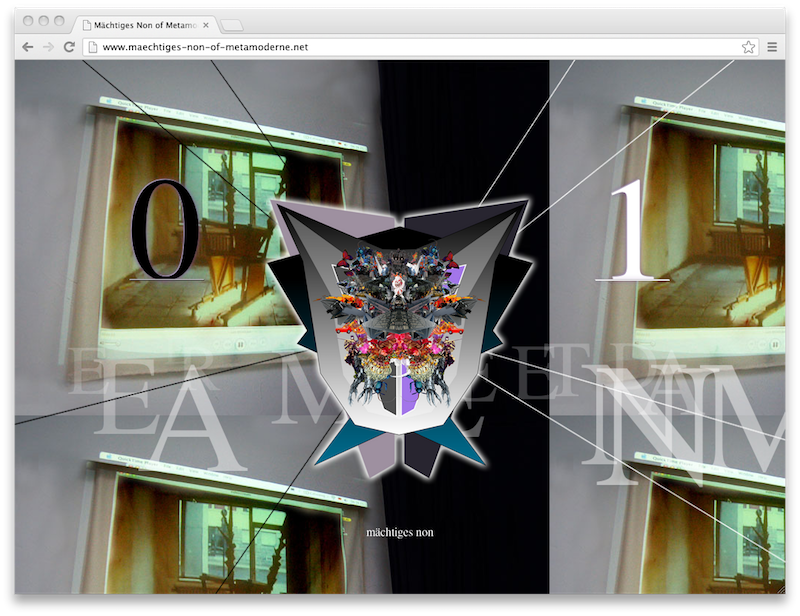
"#NON" and "maechtiges-non-of-metamoderne.net" © Florian Kuhlmann
ALW: What is the concept of the Metamoderne concerned with?
FK: The designer Götz Gramlich – an old friend of mine and a member of the mailing list – brought the idea to me. He proclaimed it some years ago on a srange trip in the hilly landscape behind Heidelberg. And i immediately assumed it. In my opinion it’s important to find new terms and words for these new times and Metamoderne is a strong concept for a world that is almost entirely defined by symbols and mediated signs. A reality, in which the virtual, the augmented and the mediated eventually converge. Everything is meta today – meta is the new normal. We need to learn living with it.
ALW: You are also an active curator. Your curatorial and traveling project “#localnon” enforced a merging of digital and analogue layers, by making online exhibitions only accessible when spectators are physically located in a particular space, in which an actual opening would take place. You did this, for example, at the former project space of KM Temporaer. How did visitors approach this type of art encounter?
FK: Funnily, it didn’t get much attention online. Perhaps the ideology of access-all is too strong at the moment. The local audience reacted quite well. It was good to see people speak with each other, while looking at their screens. After working online for a long time, I started to realise that it’s still important to have the white cube, or at least some kind of physical place for coming together. Space is still important. And #LocalNons are a good way to present Net-Art or Online Art without forcing it into a frame. People meet and talk, but at the same time they can look at the art in the way it’s meant to be.
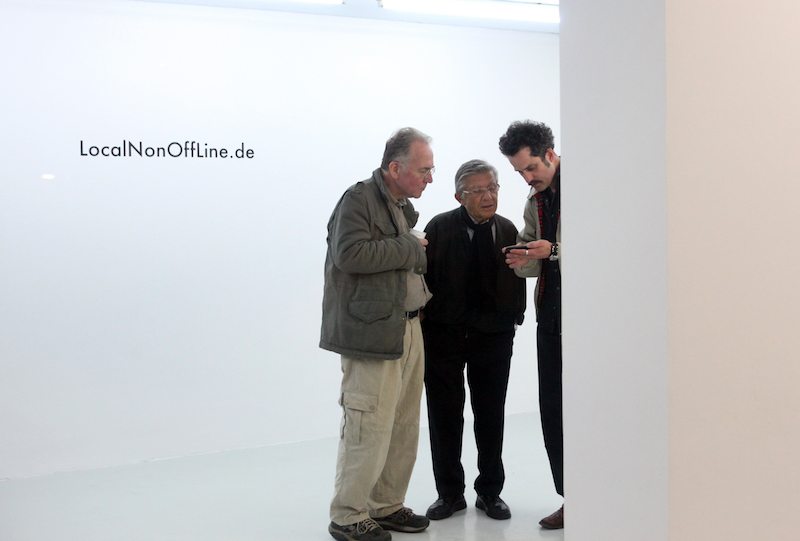
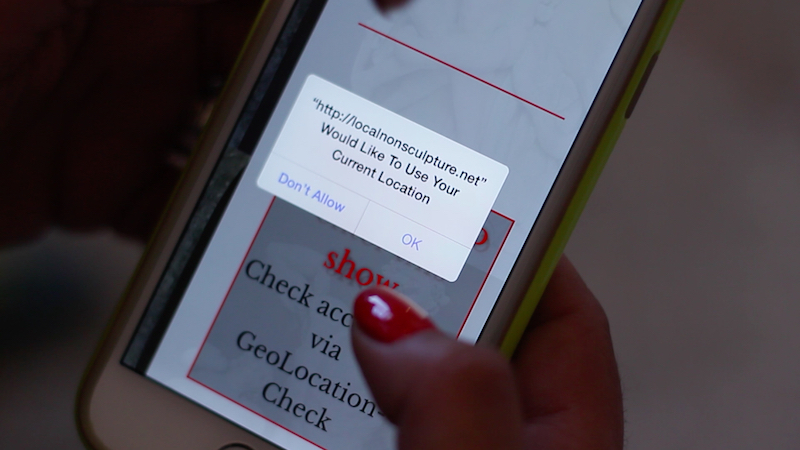
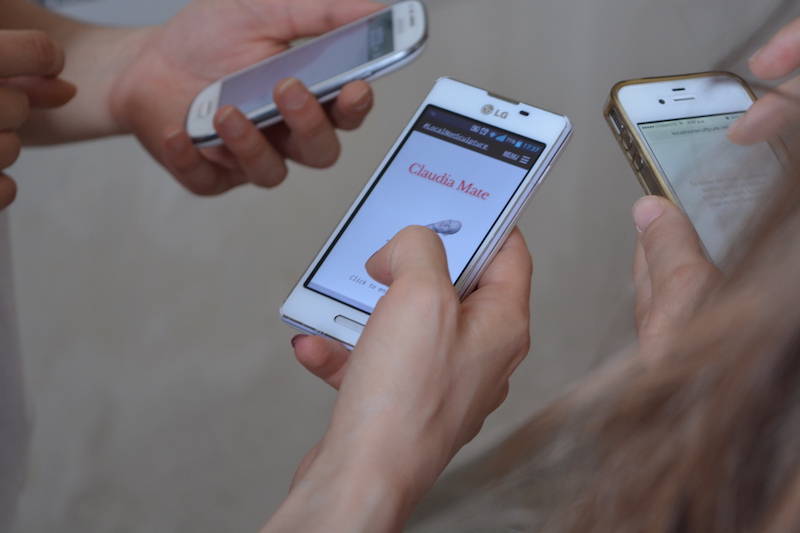
"#LocalNon" (floriankuhlmann.com/local-non.html) curated by Florian Kuhlmann
ALW: You also brought these two worlds together in your 2007-happenings, staged in the digital space of “Second Life”. How did the performative aspect play out in this atmosphere? Could you essentially experience the happenings?
FK: The Hybrid Happenings were great. Especially the “I buy everything” event, which I did at the academy for media art in Cologne, was an intense experience. Unfortunately, I never managed to create something like it again. It was about the combination of different qualities of space. The important part was that the happenings were placed simultaneously in Second Life and in the real world, with spaces connected via screens, video projections and live-streams. Parts of the audience took part as humans in the physical space and others as avatars in Second Life.
ALW: You run the project space Digital3mpire in Düsseldorf, which puts a focus on digital aesthetics and positions. What kind of themes are being emphasised in this space?
FK: I wanted to fill a gap here in Düsseldorf. The Rhineland simply didn’t have a place to meet other people, artists or designers working with the digital. It was a tool to help building a kind of scene. It’s quite difficult, because this is not Berlin or New York. I started this platform, organised shows and began to mix local artists with guests from outside who all focus on digitalism. After a while, I recognised the whole term itself can and should be the theme for our future work. Digital3mpire is also the name for a political concept of our future society and world more and more ruled by algorithms. Even though I feel it’s necessary to underline that I am not enthusiastic about the development of our political system.
ALW: perisphere.de is a successful art blog on digital art in the Rhine-area – a project that you have been running for a couple of years now, assembling a team of writers and researchers. With all of these projects attempting to unite them, what do you wish art and Internet could jointly achieve in the future?
FK: My wish would be to retrieve autonomy and freedom on all levels of living. This sounds naive in the post-Snowden-era, but I hope we will merge the mythological forces, which have always been part of art, with the new powers of the digital sphere, in order to develop a less stressful, more peaceful place for all of us. The Internet is still a great possibility to transfer information, communication and the needs of a society. And art is still a great way of seeing and receiving reality.
floriankuhlmann.com
floriankuhlmann.com

